It was a rainy monsoon day in Chandrasing Rongpi village of Kohora in Kaziranga, a village located on the foothills of Karbi Anglong and close to Kaziranga National Park. Sikha Terangpi and Rukmini Singnarpi, trekked eight kilometres long hilly route from their Rongtara village located on a hilltop early in the morning of August 23 to reach the community hall of the village.
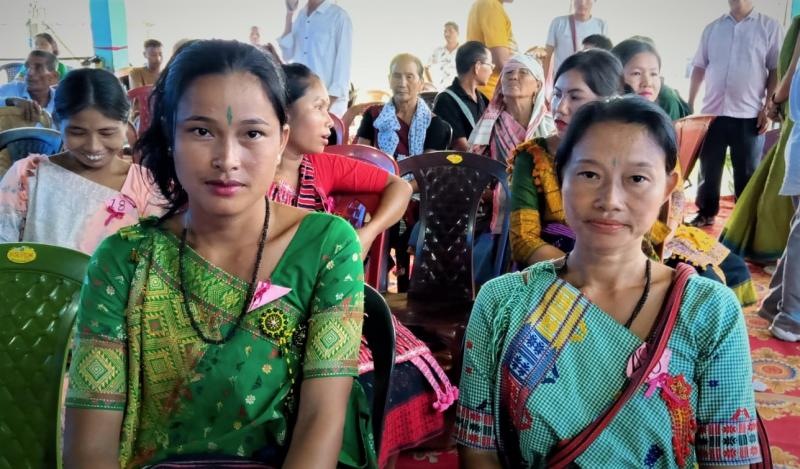
It took them three hours to reach the venue climbing uphill and walking down along the forest trails on foot as the village is yet to be connected with a proper road. Both Sikha and Rukmini were busy displaying handloom products they have woven on traditional Karbi loin loom or back strap loom at the venue of an exhibition of Karbi handloom --Handloom for Sustainable Fashion.
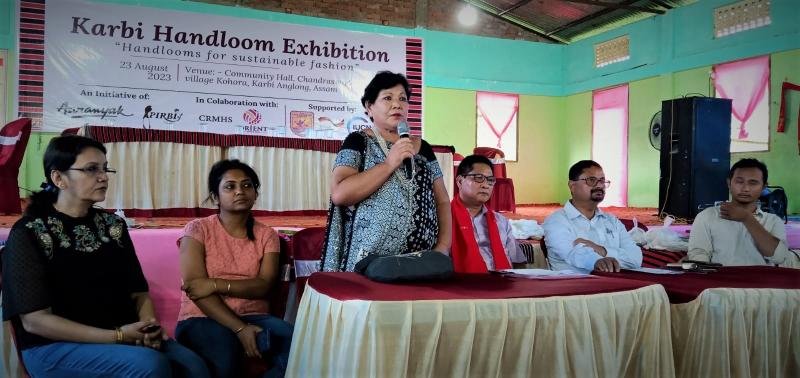
Sikha, a mother of four and Rukmini, a mother of two are among 49 such Karbi women weavers, who came from ten villages of Kohora and Diring area to take part in the exhibition organized by Aaranyak, a scientific and research organisation working for bio-diversity conservation in north east India. These weavers displayed over 300 such handloom products woven on their loin looms showcasing their fascinating nature-inspired and culture-inspired motifs.
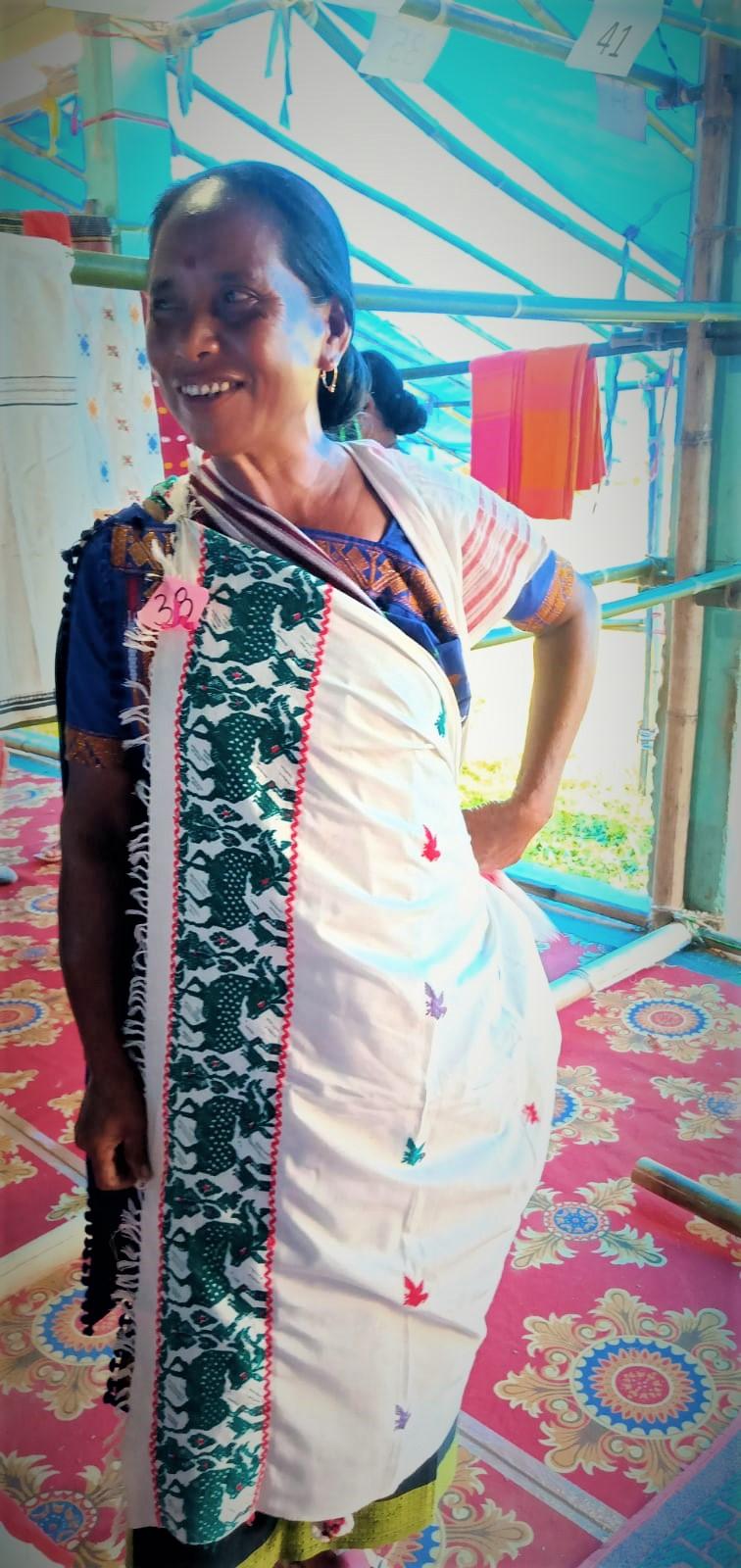
“The objective of the exhibition is to document indigenous knowledge system of Karbi motifs and designs of handloom products. These motifs and designs of indigenous Karbi handloom products are mostly nature inspired. Most of these motifs are associated with some stories that have deep root to traditional customs and values”, said Jayanta Kumar Sarma, Senior Project Associate Natural Resource Management Programme, Aarnyak.
While planning community based initiatives on handloom practices for economic benefit, it becomes an ethical obligation to maintain accuracy of ethnic values without any distortion, he said.
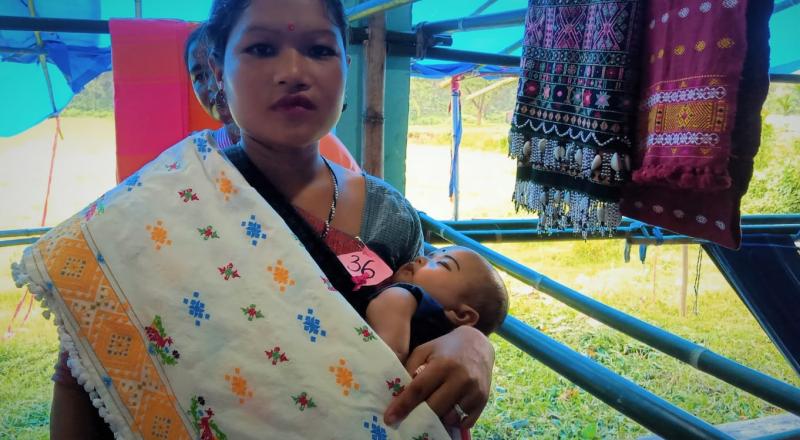
Sikha and Rukmini were also eagerly waiting to learn about customary taboos and stories related to intriguing handloom motifs and designs of Karbi lore from the community experts and technical experts, while exhibiting their traditional handloom products, invited by Aarnyak to guide them.
Karbi, a colourful hill tribe in Assam has distinctive culture and traditional handloom has a strong root to their customary practices. The nature inspired handloom motifs and designs are deeply connected to life and culture of Karbis, majority of them are still nature-worshipper.
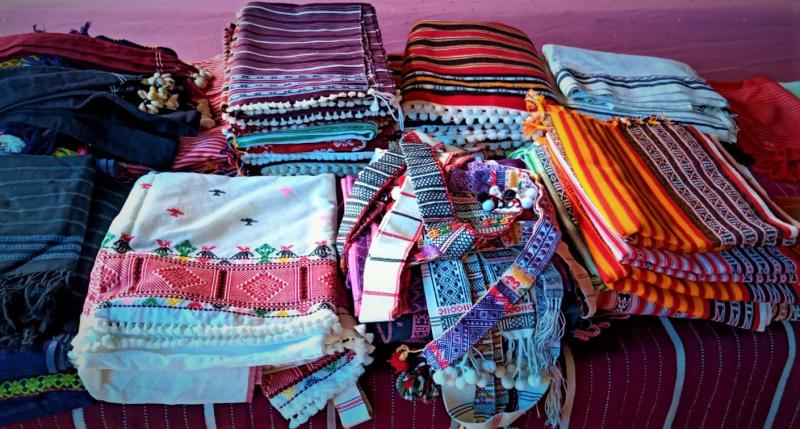
Sustainable handloom to improve economic condition of these tribal women living very close to nature, is a programme initiated by Aaranyak, along with other income generating activities. The aim of the exhibition is to document such unique elements of traditional lore, prior to exploring future opportunities of market linkage with such crafted stories of traditional lore, Sarma said.
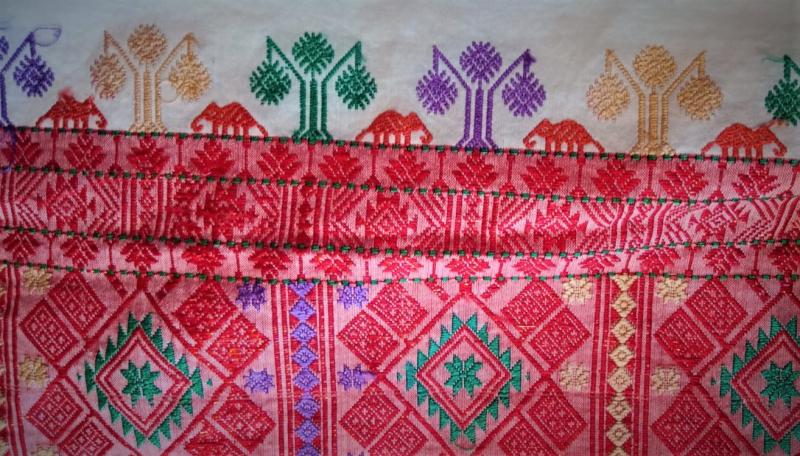
The Karbi population in this part living adjacent to KNP has two river basin systems—Kohora and Difolu. Aarnyak has been working on community based natural resources for sustainable living of communities which co-exist with nature. These people traditionally have been living very close to nature. They have been facing lot of hardship to cope with modernity. Focusing on their unique handloom expertise may help to improve their economic condition. However, for this ethical representation of indigenous designs and motifs on handloom products and quality weaving is important, Sarma adds.
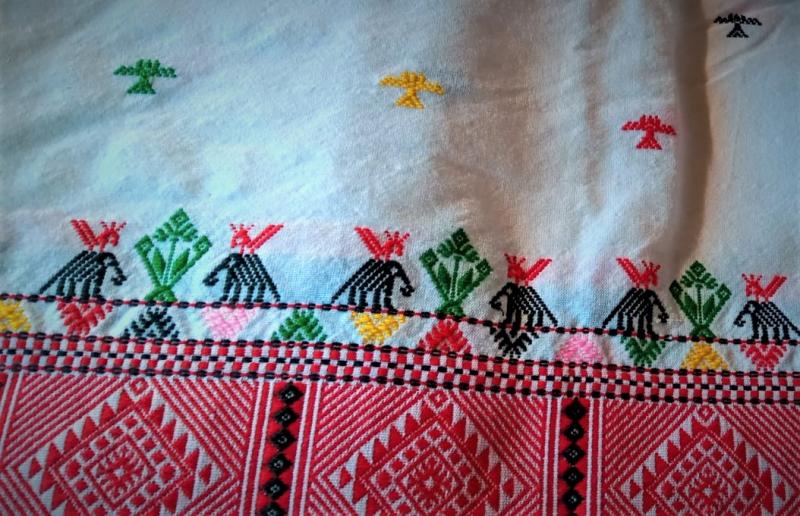
Most of the Karbi nature-inspired handloom motifs are geometrical in shape. These include varieties of animals like deer and elephant; birds like crow, pea-cock; vivid butterflies, fishes, crabs and trees. Umbrella, and hand-fan too are common motifs of their handloom practice. Certain motifs like Jambili Athon, the most extraordinary wood-craft have deep cultural value.
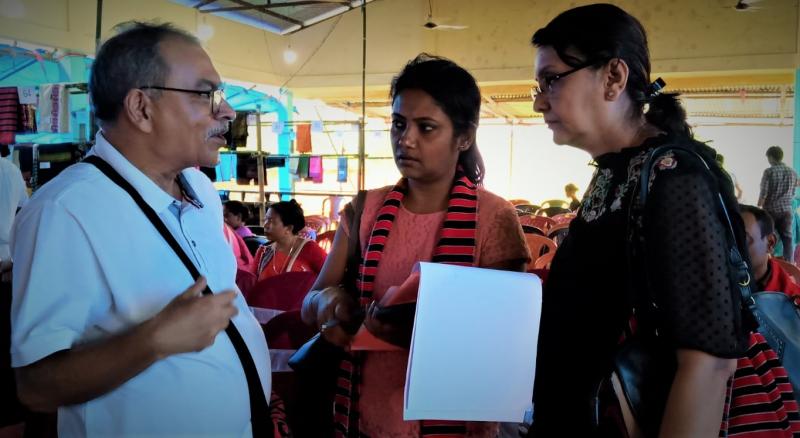
“Our objective is to carefully bring out authentic and value-based information of life and lore of any community living closely with forest and nature prior to sketch any livelihood intervention. The exhibition and the deliberations will guide us to collect such information and to work on gaps. For this we have invited both technical experts and cultural experts to evaluate handloom products”, says Dr. Firoz Ahmed, Head, Tiger Research and Conservation Division of Aarnyak who also leads the Natural Resource Management Programme of the organisation.
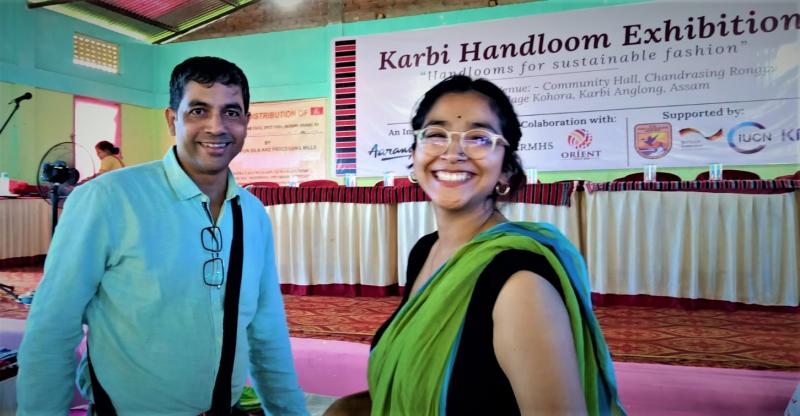
Karbis also have a rich tradition of natural dye and they extract natural colour from different trees and minerals. Eri silk rearing and weaving too, is a common practice.
“Our weavers have unique expertise in motifs and designs. We have over 200 indigenous handloom motifs. However, some of these weavers lack proper knowledge related to customary practices of such motifs”, said Dilip Kathar, the Tribal Culture Research Officer of the Karbi Anglong Autonomous Council, Diphu, while deliberating with the weavers.
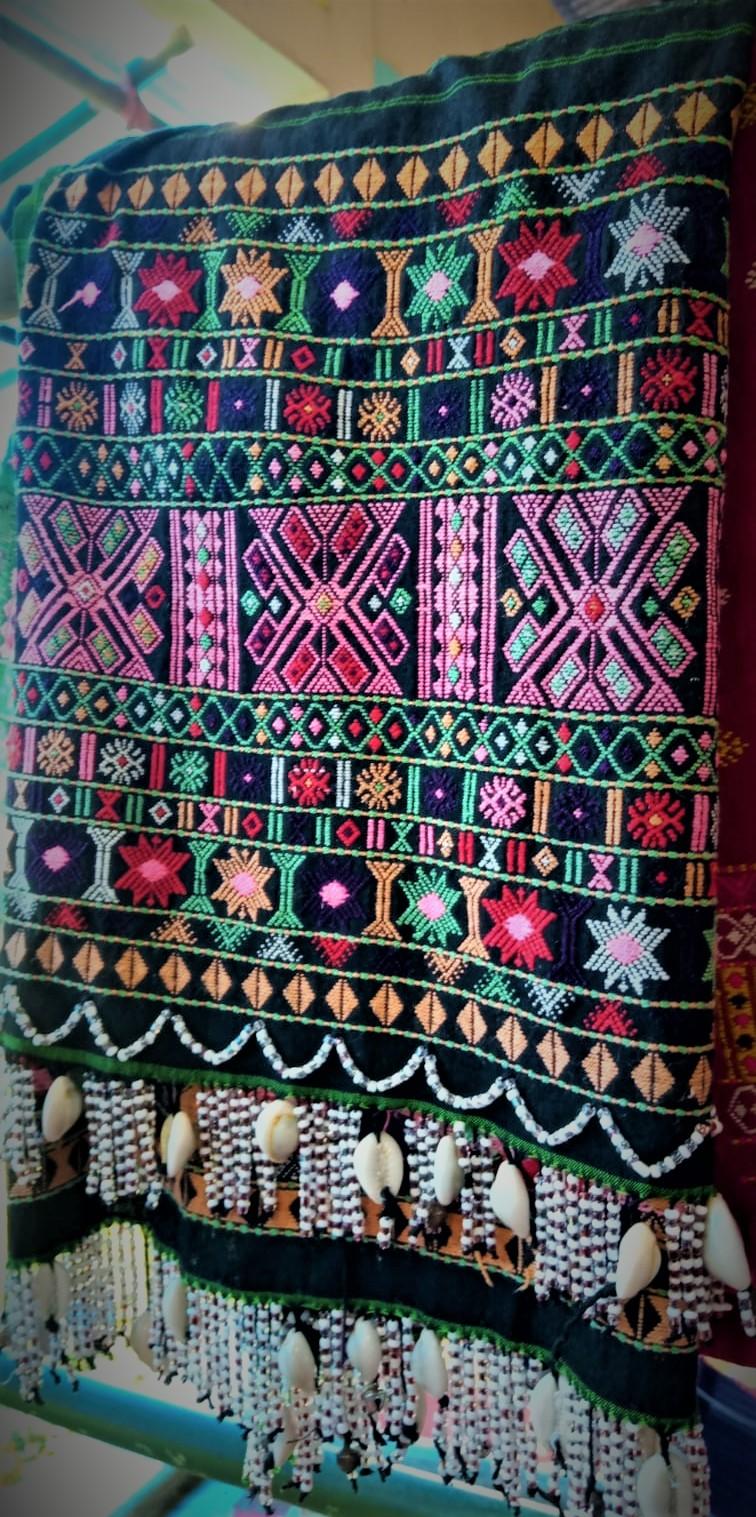
For example, Kathar said, using motifs of umbrella and hand-fan is a taboo on female dresses like Pini and Pekok, as these are used by the traditional Karbi kings only. He also alleged that weavers also tend to use motif of Jambili Athon, that have esteemed value in religious practices, haphazardly in different dresses. This motif can be used in Poho, the traditional muffler or stole woven for males only. Again, only a married male can wear a red-colour Poho. For unmarried males it must be a white-colour one. Again, in customary Karbi practices, a women should not weave Piba, the baby carrying cloth as her first weaving cloth, Kathar elaborated.
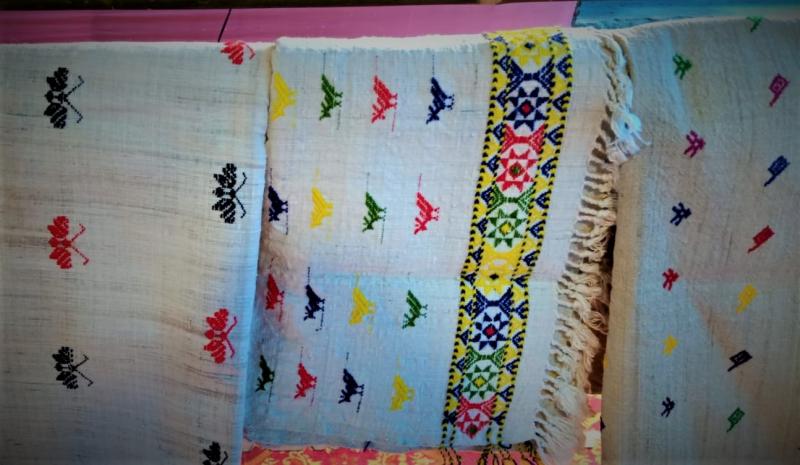
He added that such distortions are, however, merely out of ignorance of the weavers and Karbi Anglong Autonomous Council has been trying to alter all such mis-representations of handloom motifs and designs by constantly organising awareness programmes among the weavers.
While focusing on indigenous motifs, experts also deliberated on opportunities and limitations of traditional loin looms. The traditional loin loom weaving practice is mostly a time-consuming one. One of the major drawback for commercial weaving is that, only one piece of cloth can be woven at a time on such looms. A Karbi women usually spends three to four hours a day on looms after doing all the household chores.
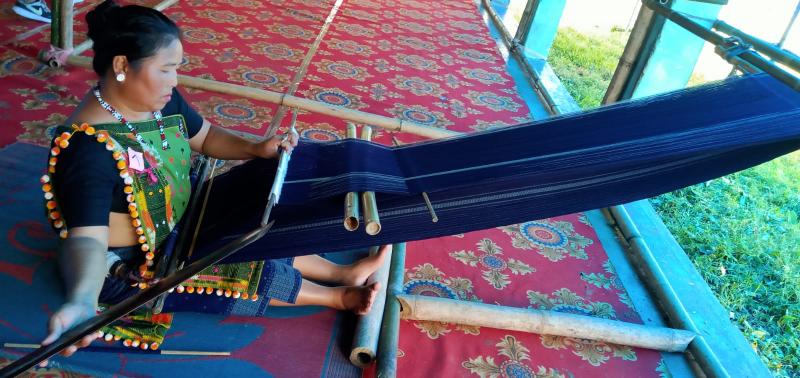
“Such constraints can be easily overcome with modified versions of loin looms designed by Indian Institute of Technology (IIT), Guwahati. Cloths up to 100 meters can be woven at a stretch on such loin looms”, said AK Das, Professor, Department of Design, IIT, Guwahati.
Das said as Karbi women have unique expertise on loins looms, introduction of other forms of looms like jacquard or other form of handlooms immediately may not be a wiser decision. From loin looms to exposure to other forms of loom, weavers would require a transition period, he said.
Inaugurating the exhibition, Sashikala Hansepi, renowned singer and handloom entrepreneur said Karbi handloom tradition is a unique repository of their knowledge system with its vividity. Weavers weave wide-ranging products for different age-group of people and for different occasions.
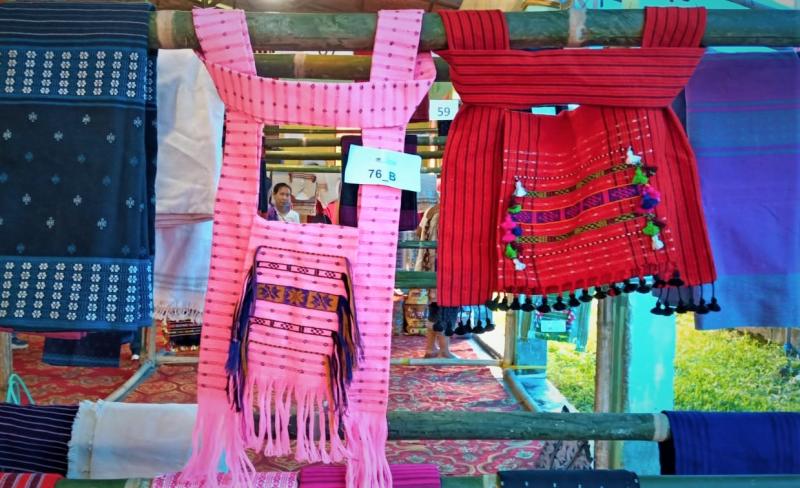
“In a traditional Karbi lore, cloths for children are different from the elders. A widow wears a distinctive pattern of dress which is different from another elderly women whose husband is alive. There are distinctive dresses for unmarried girls and married women. We have very distinctive motifs and designs that are meant for certain religious occasions. Also, various taboos are related to it. It is important for every weaver to know the details of such tradition, while unfolding it to outside world” she said.
B Mili, Assistant Development Commissioner (Handicrafts), Jyotshna Terangpi, Project Officer Aarnyak and Pankaj Sharma, Business Manager, Orient also highlighted different aspects of Karbi weaving tradition. Two design-experts Moushumi Sharma and Moitree Das evaluated the products from the perspective of representation of cultural values and market linkage. It was also supported by Pirbi, Orient and IUCN.
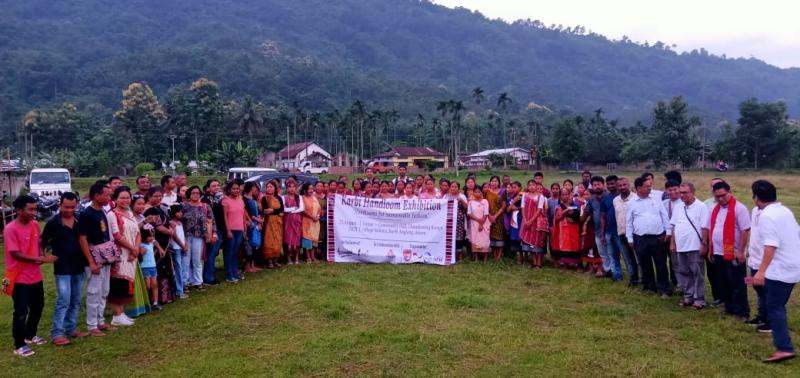
Aarnyak has been engaged in wide-ranging livelihood initiatives to improve economic condition of people of these villages. These include promoting small tea plantation and imparting training for organic and hand-crafted tea, developing homestead garden for vegetables, training for food processing, documentation of indigenous Karbi seeds etc, among others. Such initiatives have a positive role in steadily changing their life.
Sikha and Rukmini, tells nezine.com that apart from weaving they have started growing organic tea under the guidance of Aaranyak, on one bigha of land each. After receiving training on hand-crafted tea, they have started manufacturing it. They can manufacture about 500 grams to one kilogram of handcrafted tea every week and hope to earn Rs 1500 a kg. Both of them hope to blend the art of manufacturing handcrafted tea with their traditional weaving expertise to augment household income.